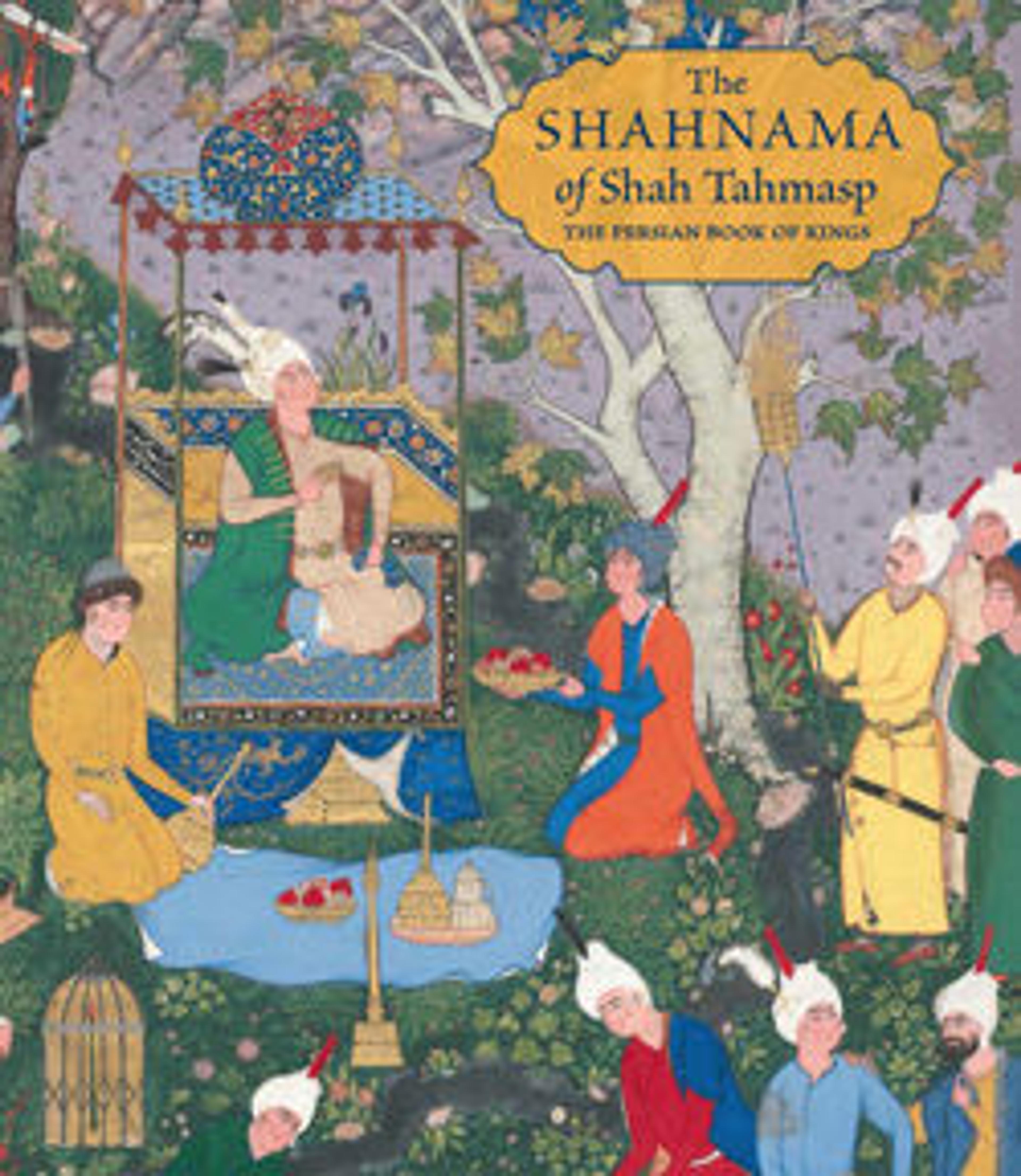"Rustam Blames Kai Kavus for the Death of Siyavush", Folio 202v from the Shahnama (Book of Kings) of Shah Tahmasp
The news of the death of Siyavush causes lamentation at the Iranian court and in Zabulistan, where Rustam swears to avenge his murder. After a period of mourning, Rustam journeys with his army to the court of Kai Kavus. First, he reproaches the shah for listening to Sudaba and allowing Siyavush to go to Turan. Next, he drags Sudaba out of her chambers and stabs her to death. After seven days of mourning, he issues the call to battle and departs with the army for Turan.
Artwork Details
- Title:"Rustam Blames Kai Kavus for the Death of Siyavush", Folio 202v from the Shahnama (Book of Kings) of Shah Tahmasp
- Author:Abu'l Qasim Firdausi (Iranian, Paj ca. 940/41–1020 Tus)
- Artist:Painting attributed to Qadimi (Iranian, active ca. 1525–1565)
- Workshop director:Mir Musavvir (Iranian, active ca. 1525–55)
- Date:ca. 1525–30
- Geography:Made in Iran, Tabriz
- Medium:Opaque watercolor, ink, silver, and gold on paper
- Dimensions:Painting:
H. 11 1/8 in. (28.3 cm)
W. 7 1/4 in. (18.4 cm)
Page:
H. 18 11/16 in. (47.5 cm)
W. 12 9/16 in. (31.9 cm)
Mat:
H. 22 in. (55.9 cm)
W. 16 in. (40.6 cm) - Classification:Codices
- Credit Line:Gift of Arthur A. Houghton Jr., 1970
- Object Number:1970.301.30
- Curatorial Department: Islamic Art
More Artwork
Research Resources
The Met provides unparalleled resources for research and welcomes an international community of students and scholars. The Met's Open Access API is where creators and researchers can connect to the The Met collection. Open Access data and public domain images are available for unrestricted commercial and noncommercial use without permission or fee.
To request images under copyright and other restrictions, please use this Image Request form.
Feedback
We continue to research and examine historical and cultural context for objects in The Met collection. If you have comments or questions about this object record, please contact us using the form below. The Museum looks forward to receiving your comments.
